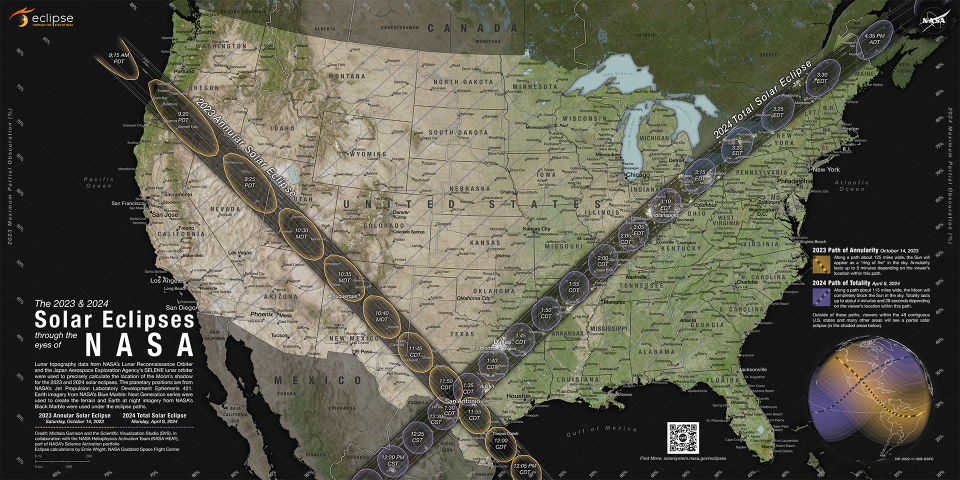Next total solar eclipse is April 8, 2024 — and you'll want to be just south of Michigan
The next total solar eclipse will come to North America on April 8, 2024, passing by just south of Michigan through Toledo, Ohio. With the path of totality coming so close by, parts of southeastern Michigan may see a slight impact of the eclipse, and the full experience awaits just a short drive south.
Here's what you need to know before heading out to catch a glimpse of this solar eclipse next year.

What to expect
Total solar eclipses involve the moon passing between the sun and the Earth, blocking the face of the sun. Thus, impacted areas experience brief darkness and cooling during the eclipse, as the moon blocks sunlight from reaching the Earth. This upcoming eclipse will feature a gradual dimming of the sky, as the moon blocks the center of the sun, leaving an outer ring of the solar disk visible.
Path of totality
Experts predict the eclipse path will begin in Mexico and enter the U.S. through Texas, heading north before exiting North America on the coast of Newfoundland, Canada. This will occur over a span of several hours, starting at about 11:07 a.m. PDT and ending around 5:16 NDT. The duration of totality will last for up to 4 minutes and 27 seconds, varying across locations on the path of totality.
Toledo viewing
The University of Toledo's Ritter Planetarium will host a public viewing event at the Glass Bowl football stadium, said planetarium Director Michael Cushing. In Toledo, experts expect to see a modest duration, with the eclipse lasting about 1 minute and 53 seconds in the city's downtown.
"It's a really wonderful experience and the hope is that we'll have various booths around from science centers... in the glass bowl that people can hang around and go see during the day," Cushing said.
Organizers are in the early stages of planning for the event, gathering vendors, and preparing parking and promotional advertising.
"The idea is that everyone will get to come together," he said.
For Michigan viewers
While Michigan won't be in the direct path of totality, the bottom corner of southeast Michigan may fall under the edge of the path. This means the area could see some dimming of the sky as the moon's shadow covers the sun, slightly cooling the atmosphere. Residents looking to experience the entirety of the eclipse can travel south into Ohio, where the path of totality will cross through.
More: Detroit area will see 80% of solar eclipse during August astronomical event
More: You'll probably be dead before Michigan's next total solar eclipse
Frequency
While total solar eclipses typically occur every 18 months, they don't often repeat in the same location. Just 15 total solar eclipses have been recorded in the U.S. within the last 150 years. The most recent such eclipse occurred in 2017, passing through parts of metro Detroit. Prior to that, the last total solar eclipse occurred in 1979. Experts predict the next total solar eclipse in the U.S. will occur on Aug. 23, 2044.
Safety tips
Cushing recommends wearing eclipse glasses or using a pinhole camera to view the eclipse. Staring directly at the sun can cause damage to viewers' eyesight and should be avoided.
This article originally appeared on Detroit Free Press: Total solar eclipse is April 8, 2024: Path south of Michigan in Ohio

